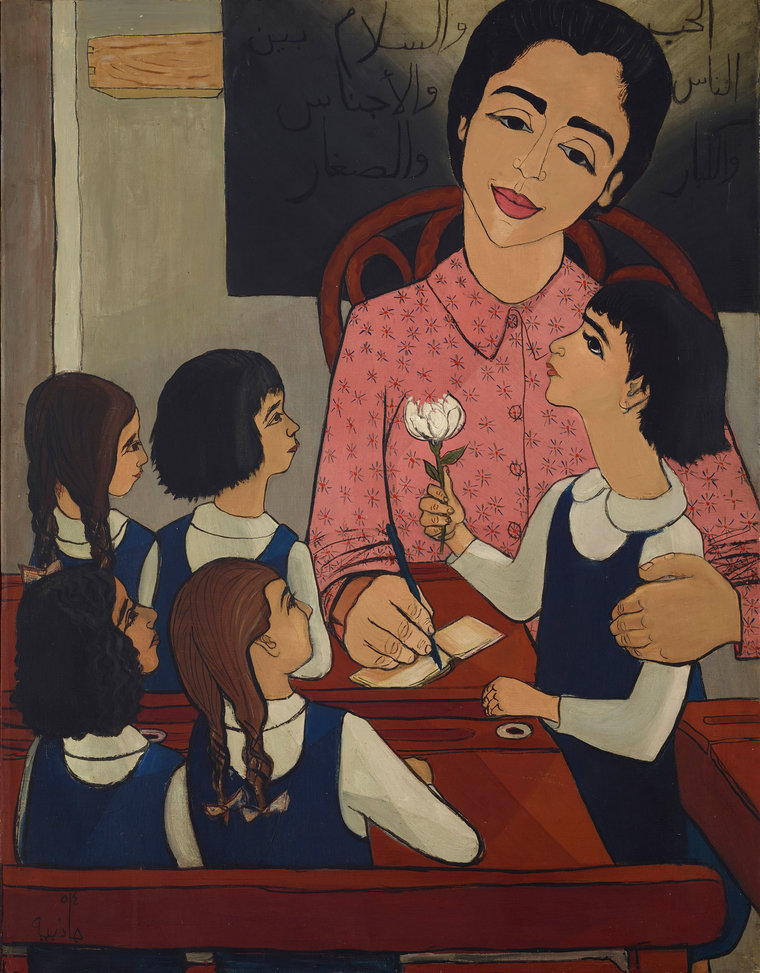Gazbia Sirry’s L’institutrice, 1954, exemplifies the artist’s perspective on the importance of affirming the role of women in society. Her early works up until the early 1950s prioritized the depiction of Egyptian women taking part in a variety of social and cultural roles. Here, the woman, Sirry’s sister, is shown in the role of an educator surrounded by her daughters, symbolizing young female students. The teacher looks upon her pupils with compassion and care as she guides them through their education and growth. In turn, the students gaze up at her attentively and lovingly, with one girl offering her a white flower. Behind them, on the chalkboard, is the phrase: “الحب والسلام بين الناس والأجناس والكبار والصغار” (“Love and peace between people and races, old and young”), reflecting Sirry’s humanist perspective and her denunciation of all inequalities.
Sirry’s worldview was formed by the environment she grew up in. After the death of her father, she was raised by her widowed mother and divorced grandmother. This must have profoundly shaped her perception of women’s enforced gender roles. It also provided her with a fully supportive environment as her family, including her paternal uncles, encouraged her to explore her artistic inclinations and pushed her to study art later on. After finishing her studies at the Higher Institute of Art Education for Women Teachers in 1950, Sirry took an active role as a member of the thriving artistic scene at the time. She was part of the Contemporary Art Group, which prioritized freedom through art, folk, and popular traditions, and whose work emphasized social realism. This can be seen in Sirry’s topics of choice as well as her stylistic decisions as she brought in aspects of Ancient Egyptian painting with its strong contouring of figures and the static flatness of the scene.
Sirry’s representations of women from the various classes that made up Egyptian society functioned as a political and social commentary. Such representations were an extension of Sirry’s ideological perspective, which was shaped by the context of the Nasserite Revolution of Egypt in the early 1950s, and its unrealized promises for social justice, access to education for all, equality between classes and genders, and the abolition of class differences. This piece reflects the dynamic cultural discourse of Egypt at the time, particularly the ongoing debates regarding the contribution of women to the development of the nation. In L’institutrice, Sirry is addressing the labor that women partake in by recognizing the importance of their roles as progressive educators in the process of nation building. In the optimism of the rise of the new Egyptian Republic, Sirry chose to showcase the women as living and real subjects, shaped by and, in turn, shaping the environment within which they exist.
Signed and dated in Arabic front lower left.




